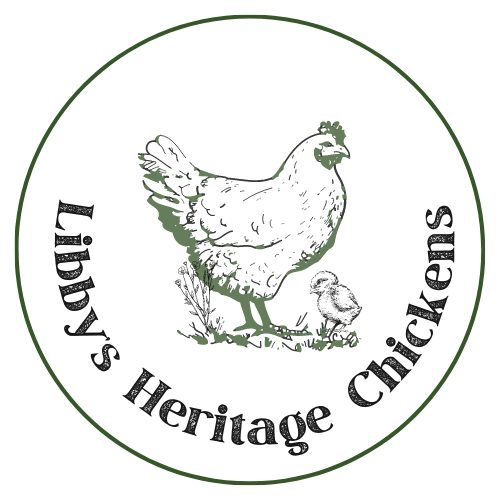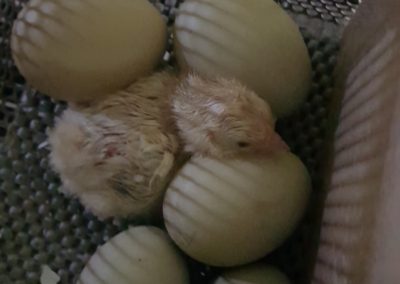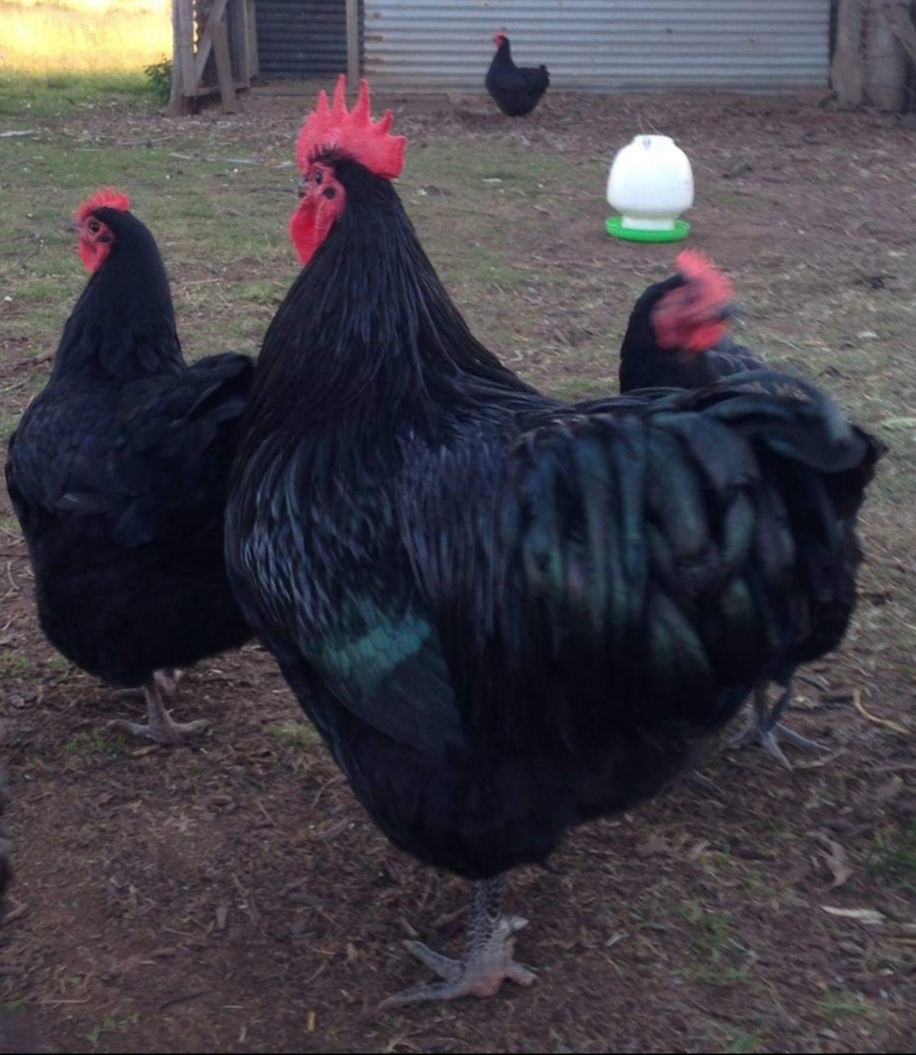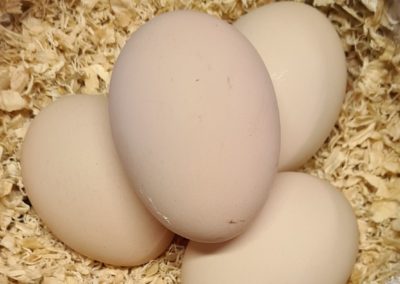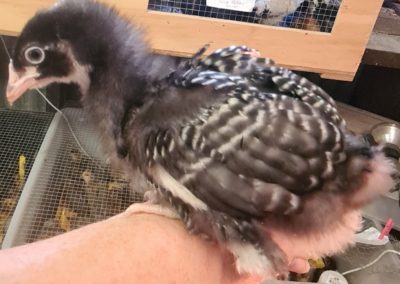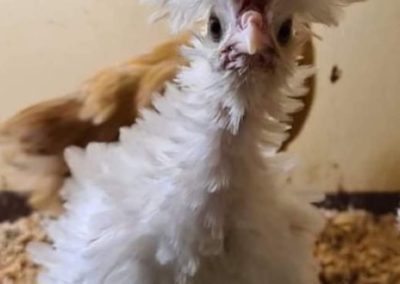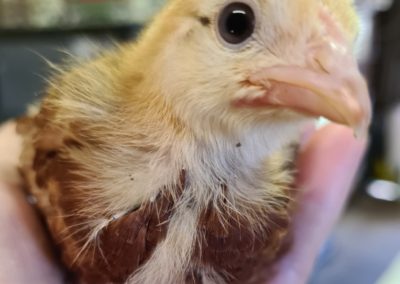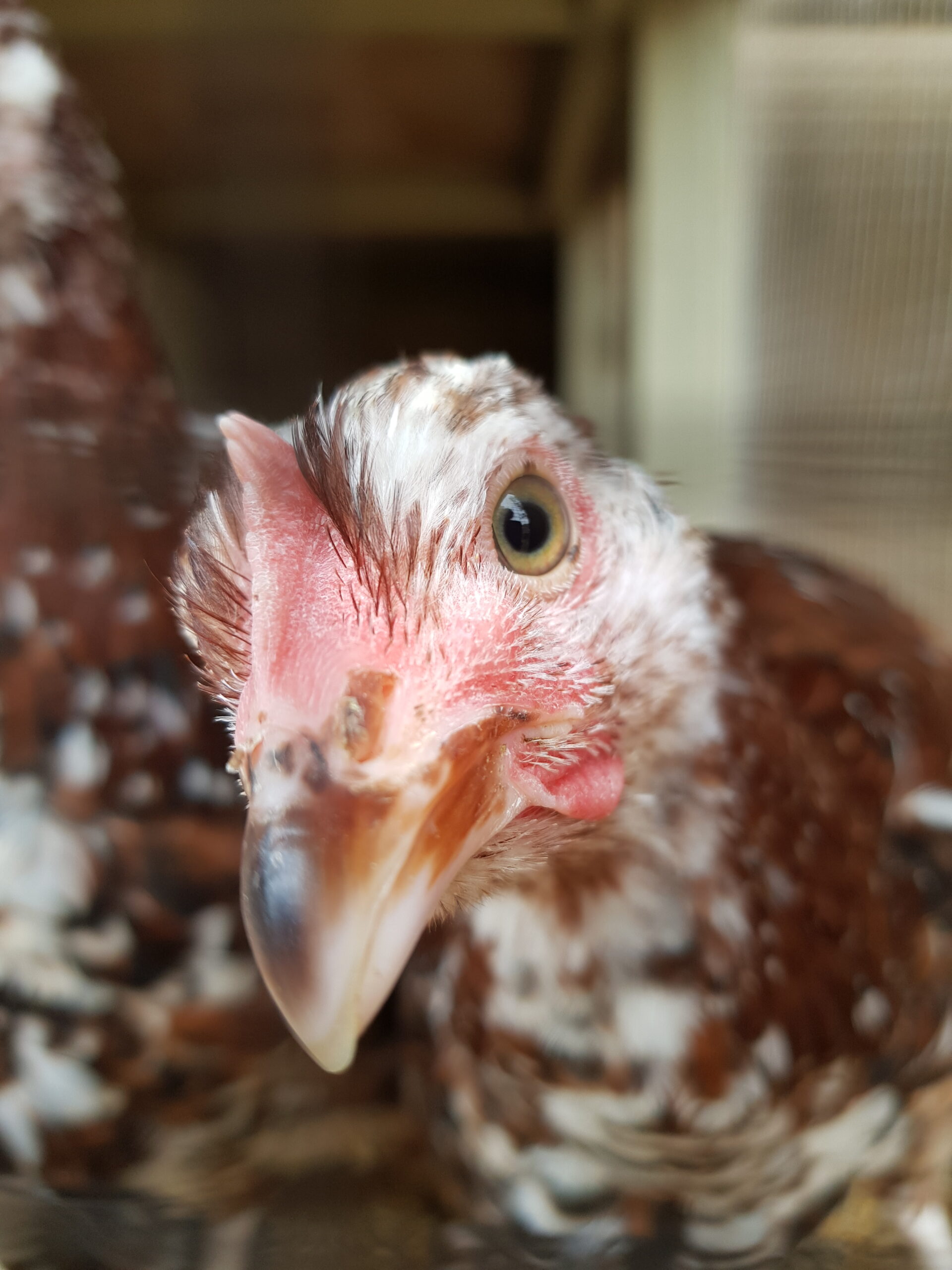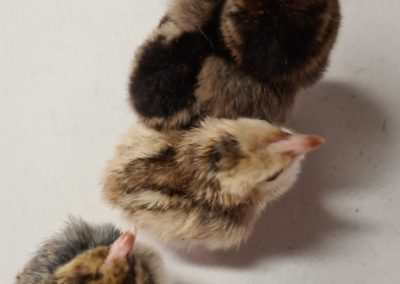
Araucana
Renowned for laying from 190-200 blue to green eggs a year, they are a great addition to the coop adding some beautiful colour to your egg basket. These querky chooks are crested and have muffed and bearded faces. They are a medium breed and our flock consists of Black, cuckoo, isobel, blue, wheaten, lavender and sometimes some unexpected colours just to keep things interesting.

Australorps
Australorps are a medium to large breed renown for their consistent egg production, laying around 250 dark cream eggs a year as well as their friendly personalities. They are a utility breed and are suitable for the table as well as for their eggs. Our flock consists of the well known beautiful blacks as well as the rarer blue, splash and whites.

Barnevelder
Barnevelder’s are great dual-purpose family friendly bird that has gained popularity as backyard chickens. Their beautiful laced appearance, ability to produce golden brown to speckled brown eggs year-round and calm nature make them a great addition to family life. The Barnevelder is a medium to large breed that will produce 3-4 eggs a week.

Cream Legbar
The Legbar is a rare British auto-sexing chicken breed. It was created in the early twentieth century by Reginald Crudnall Punnett and Michael Pease at the Genetical Institute ofCambridge University. The Legbar was created by cross-breeding Barred Plymouth Rock chicken, Leghorns, Cambars, and in the case of Cream Legbars,Araucanas.
The Araucana blood in the Cream Legbar is reflected in its crest and blue to blue-green eggs.
Legbars can be a flighty bird so we recommend that you acquire them young and spend time handling them which does end up making them a lovely quiet bird.

Chinese Silkie
The silkie is by far my favourite breed of chicken. The Silkie does need a bit of extra care but is well worth the effort. Keep your silkies out of the wet weather and mud as they don’t have the normal water resistant feathers that other breeds of chickens do and like the pekin they have feathered feet that collect mud. You need to keep your eye on silkies in the heat but they love cold weather and will lay 100-120 white to pale cream tinted eggs a year which includes the winter months when most other breeds have gone off the lay. Silkies make great first chickens for young children as well as the elderly and are often taken to nursing homes as therapy pets.
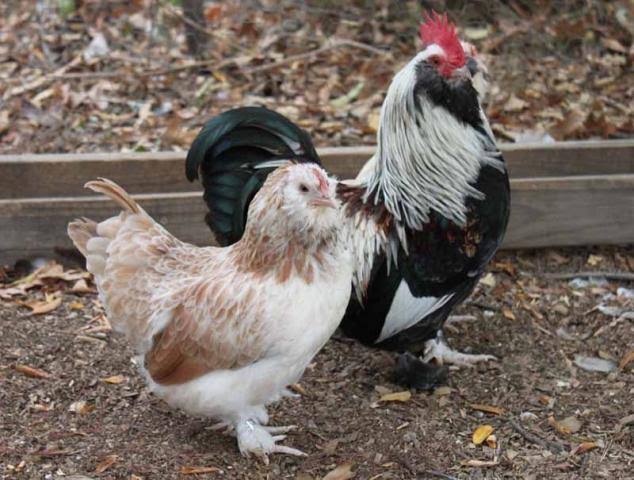
Faverolles
Faverolles (silent “s”) are an unusual breed in Australia, and most of those found here are of the Salmon variety. They were developed in the village of Faverolles in Northern France, as a dual meat & egg producing, medium sized chicken.
Everyone who keeps Faverolles are always delighted by how sweet, gentle and social they are. Many families love to fill their yard with Faverolles because they make excellent companions for their young kids. These 5 toed, 240 eggs a year chickens love cuddles and wouldn’t dream of pecking, poking or scratching anyone.

Leghorns
Leghorns are an independent breed of chicken: They are generally friendly, though they can be noisy and a bit bossy towards other chickens at times. Due to their low broodiness, Leghorns are good layers, laying an average of 280 white eggs per year and sometimes reaching 300–320 eggs annually.

Marans
Marans hens lay around 150–200 dark brown eggs each year depending on the variety. Marans are historically a dual-purpose bird, prized not only for their dark eggs but for their table qualities as well. Marans are a friendly bird and get on with other chickens with no issues. Lots of people love Marans for their dark brown eggs as an addition to their rainbow egg collection of coloured egg laying chooks.
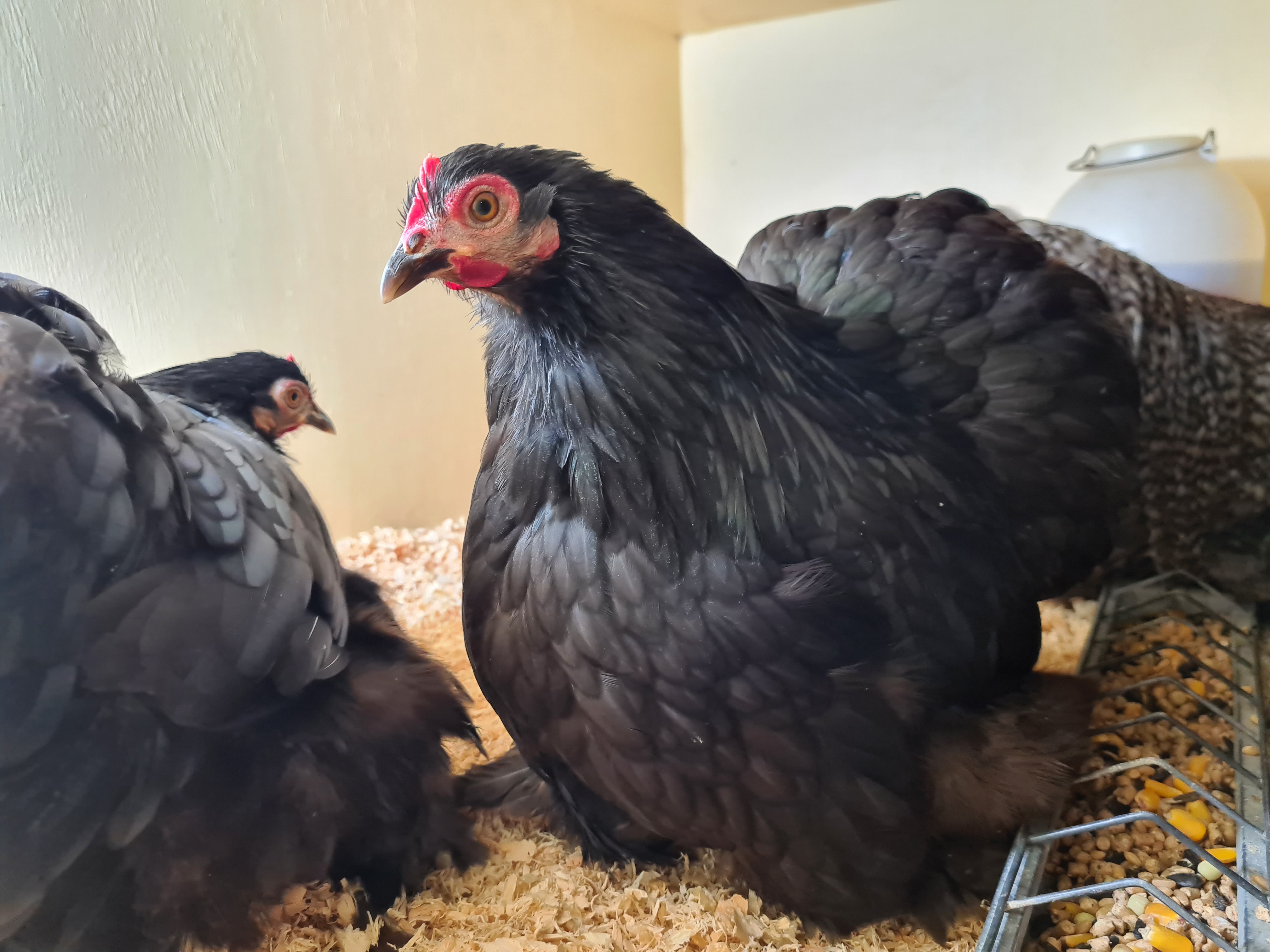
Pekin and Pekin Frizzles
Pekins are quiet and friendly, they don’t wander or fly and so will be content with a small space and a 60cm high fence. What about egg production? Alas, you can’t have everything and this is one attribute that is mediocre, pullets will lay around 90 eggs a year, hens 50-60 eggs a year. Pekins tend to be seasonal layers, which mean eggs for three or four months and then they slow right down. The eggs are reasonably small with lightly tinted shells.
If you want to engage in natural incubation and rearing, the Pekin hen will oblige, regardless of whether you put chook eggs or those from another species under her. This breed is renowned for its broodiness and its wonderful fostering ability.
Pekins need a little extra care but aside from this they are not demanding to look after. Ensure they are protected from dogs and foxes because they are unable to fly so can become easy victims. Remember too that perches and nest boxes need to be low or they can’t access them. Foot-feathered breeds must be kept indoors in wet weather plus regular examination of toes and legs is recommended in case scaly leg mite has moved in under the feathering.
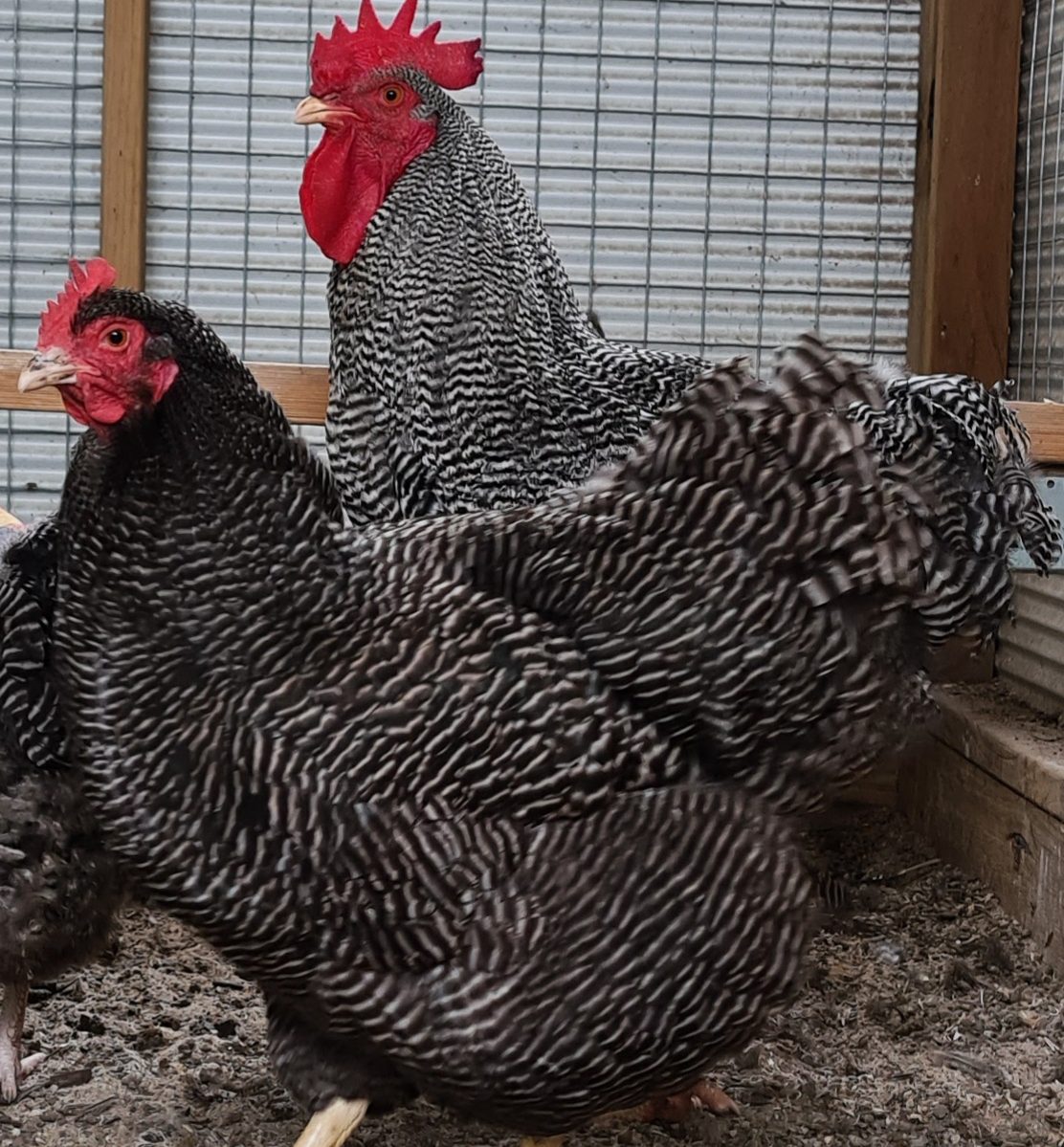
Plymouth Rock.
It is a friendly, hardy, dual purpose breed, which was originally used to produce commercial broilers. This breed demonstrates great mothering skills and on average produces 160-180 cream to very pale brown eggs per year. Due to these qualities, the Plymouth is an ideal bird for beginners.

Polish and Polish Frizzle
Our beautiful and rare polish flock is a treasure and are very precious to our farm. With great personalities these chooks are a crested variety that are stunning to look at but are also great layers, laying up to 200 white eggs a year. They are a smaller bird and have personality plus. Our flocks consist of frizzled and smooth varieties. We have buff laced, gold laced, blue laced gold, white, cuckoo, white crested black, silver laced and a few random colours amongst our flocks. Availability of colours will vary from week to week. Pop a few in your pen to brighten your day.
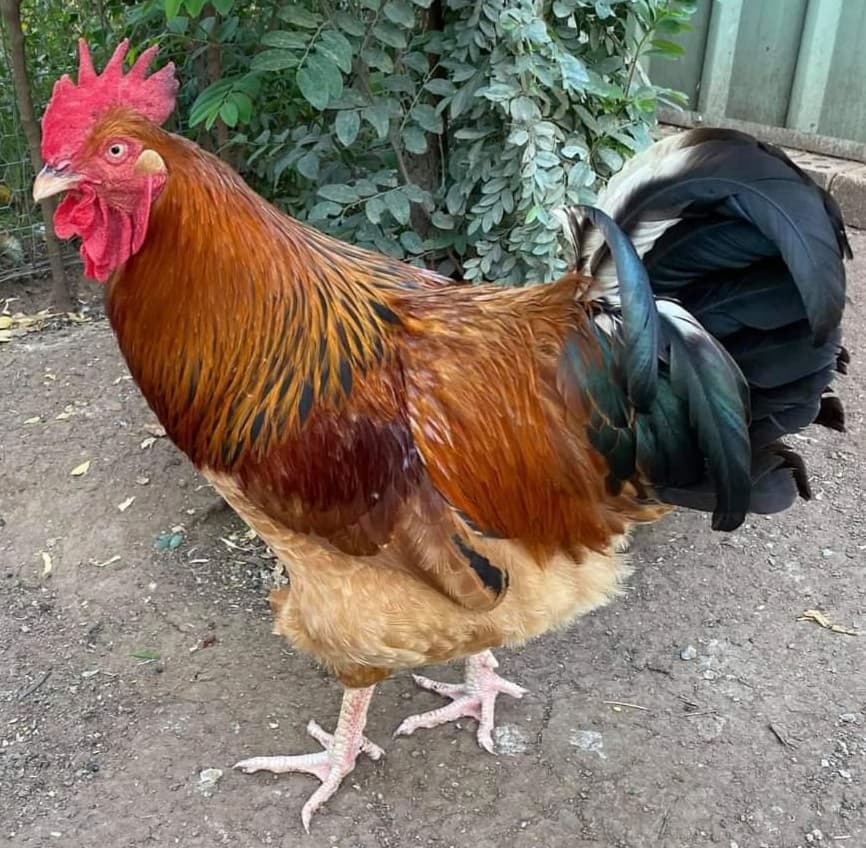
Quamby

Rhode Island Red (Bantams)
The Rhode Island Red Bantam is a delightful bantam breed that is docile, small, and a wonderful layer, just like the large fowl version. They are perfect for the backyard that requires minimal space. Who wouldn’t want a miniature version of a good producer after all?
Rhode Island Red Bantams are a beautiful mahogany colour with a single comb and are a good producer of small dark cream/light brown eggs often laying 6-7 eggs per week. With their docile temperament they make good foragers for the backyard.

Sussex
Sussex chickens are a large friendly utility breed, suited to the table as well as for their eggs. Laying 4-5 eggs per bird per week, the Sussex chicken will certainly keep bellies full. We keep several colours of Sussex which include, Porcelain, Speckled, Lavender and Lights

Welsummer
Welsummer hens have a lovely gold and brown plumage, they have a calm gentle temperament and are happy to hang out in their run or wander your backyard searching for yummy creatures, grass and seeds to eat. The Welsummer lays about 160 eggs per year; the eggs are brown and compliment all the other eggs sitting in the door of your fridge

Wyandottes
The Wyandotte is a dual-purpose breed, raised both for eggs and for meat. It matures moderately rapidly, and hens are good layers of medium sized light brown/cream tinted eggs laying around 200 eggs per year, or just under 4 per week.
They do make great moms happily raising a batch of chicks for you. Of course, this means the Wyandotte have a tendency to be broody, which is a nuisance if you want eggs not chicks. Wyandotte are a friendly docile breed that are kid friendly bird with a happy content temperament.
